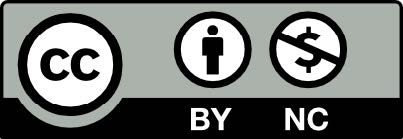
Applied Classroom Behaviour
Exemplify
You are the best example of consistent mature respectful behavior in your student’s life. At all times all members of the teaching team must exemplify calm mature behaviors.
Change
You cannot change another person’s behavior, but you can change the environment around that behavior. We develop behaviors because the behavior gets us what we need from that environment.
Consider what need triggers a student’s behavior and what need is met from your response to that behavior.
Consider what you can change in the environment to meet students’ needs.
Anxiety
Student anxiety is the cause of most behavior problems. Much of the following is about reducing anxiety in the classroom. What causes distress in your students? What causes embarrassment in your class?
Trauma
The impacts of abuse and neglect on children’s social functioning include the need for control; attachment difficulties (including attachment to school); poor peer relationships; and the instability arising from frequent moving. Children who have been abused and neglected often have intense shame responses to perceived failures or insults and to the experience of being disciplined.
Recovery from trauma will occur best in the context of healing relationships.
- create connections
- defuse conflict
- plan for challenging incidents
- remember self-care for teachers
Expectations
On day one negotiate and set the expectations and consequences for behavior in your classroom.
Make your expectations clear and explicit. e.g.
- We are Respectful
- We are Responsible
- We are proud
Buddies
Establish a buddy class to share students who need time-out from your class. Because using the deck as a time-out space encourages students to wander.
Visit with the whole class for reading or SEL activities to make it a natural place for students to be.
Process
Keep your class’s expectations visible and refer to them regularly.
Show respect for your students, listen to their needs, and preserve their dignity.
Keep students busy and challenged. (Know everyone’s literacy level and target work at their level).
Manage entry and exits from your classroom. At the beginning welcome your students individually, during the lesson don’t allow aimless wandering, and at the end of your class farewell the group with something to look forward to in the next lesson.
Rewards
Use the school’s reward systems but also establish an in-class reward system.
Always give rewards/points to students. Never take them away.
Because a positive reinforcement (giving) has a targeted result, negative reinforcement (taking) creates an unknown reaction.
Have individual and group targets, make achievement visible, explicit, and celebrated.
Routines
Sporadic attendance and fractious environments mean that students need as much routine and consistency as we can give them.
- Follow the same routine every day.
- Telegraph changes well ahead.
- Class jobs and responsibilities help give a sense of belonging.
- chair police, line leaders, lunch order collection, roll delivery, and tidy monitors.
- Share the lesson objective, “what we are learning” context or big picture to reduce anxiety.
- Break routines with awards. Random rewards are more effective than an expected prize.
Practice
Trauma is common in your students. Violent displays of emotion are common in the community and students will model this behavior. However, our role is to teach more widely accepted forms of expression.
- Cooldown areas are needed if children feel they need to withdraw or sometimes sleep.
- ‘Sorry Stories’ should be used for all parties to rebuild after conflict use Restorative Practice but also rebuild with the families as they will have lost face if their child is in trouble.
- Children should be put on contract when needed, this includes a discussion with family.
- Contracts should be targeted at preferred behaviors and limited to a week.
- Try not to reprimand a student in front of others or expect them to meet your gaze.
Teasing
Establish a family map of appropriate relationships between students so that students know how they are related to each other and their kinship obligations and appropriate behaviors.
Ensure students are seated facing you, not each other as sign language is a common form of teasing.
Data
Share issues with your senior staff, they may have some insight into your students. Check previous records of misbehavior and add data to these systems so that we can track problems and better support the children.
Extreme Behavior
It is rare but when extreme behavior occurs safety for you and your class is your primary concern. If you can’t isolate the perpetrator, you need to move the class away from the person for everyone’s protection and safety. Your class needs an evacuation plan for such situations.
For example. Jane is teaching math to her grade 6 class when John arrives in a heightened state and threatens the class. Jane cannot talk John out of the room and lock the door, so she declares. “OK Class, it’s buddy time. John will wait here.” Her class stands and quickly moves to their buddy class. Jane then calls senior staff for assistance. Read this Management of Actual or Potential Aggression (MAPA) document
- Remain calm and positive. Another’s anxiety can spread to you or the class and spiral out of control.
- Try redirection, even for adults.
- “Hello John, it’s a beautiful day, isn’t it?
- Present yourself as a helper rather than an enforcer.
- “I think this is the wrong place. I know the Principal wants to hear what you are saying, we really should go and see him right now.”
- State the situation clearly and simply.
- “This is the wrong place for fighting. I must look after this class, so we are going to a calm place. I’ll call for someone to meet you here and talk with you.”
Note: You may only restrain a child if they are a danger to themselves or others. Always have a physical and emotional exit available for them. Backed into a corner the natural reaction is to lash out.
Recurring Behaviors
Sometimes an individual responds differently to consequences than the way you would expect.
A broad example is that these days spending time with the assistant Principal is often a rewarding experience for students, rather than the fear invoking threat it may have been for you as a child.
Applied Behavior Analysis asks us to look very closely at what students are getting out of the consequence of their behaviors. Often it’s not what you first thought it was and a different consequence is more appropriate.
What is Applied Behaviour Analysis.
Applied Behavior Analysis (ABA) is based on the science of learning and behaviour.
Often used for children with autism or behavioural difficulties.
Behaviour analysis helps us to understand:
- How behaviour works
- How behaviour is affected by the environment
- How learning takes place
ABA applies our understanding of how behaviour works to real situations.
Our goal is to increase behaviours that are helpful and decrease behaviours that are harmful or affect learning.
When a behaviour is followed by something that is valued, a person is more likely to repeat that behaviour.
Antecedent, Behavior, Consequence
Understanding antecedents (what happens before a behaviour occurs) and consequences (what happens after the behaviour) is another important part of any ABA program.
The following three steps – the “A-B-Cs” – help us teach and understand behaviour:
Antecedent: this is what occurs right before the target behaviour. It can be verbal, such as a command or request. It can also be physical, such as a toy or object, or a light, sound, or something else in the environment. An antecedent may come from the environment, from another person, or be internal (such as a thought or feeling).
Behaviour: this is the person’s response or lack of response to the antecedent. It can be an action, a verbal response, or something else.
Consequence: this is what comes directly after the behaviour. It can include positive reinforcement of the desired behaviour or no reaction for incorrect/inappropriate responses.
Looking at A-B-Cs helps us understand:
- Why behaviour may be happening
- How different consequences could affect whether the behaviour is likely to happen again
Positive Reinforcement
First, identify a goal behaviour. Each time the person uses the behaviour or skill successfully, they get a reward. The reward is meaningful to the individual – examples include praise, a toy or book, watching a video, access to the playground or other location, and more.
Positive rewards encourage the person to continue using the skill. Over time this leads to meaningful behaviour change.
It is important not to provide any reaction to negative behaviours as that attention is probably the reward the individual is seeking.

Except for any logos, graphics, designs, photos, emblems and trademarks, this document is licensed under a Creative Commons Attribution 4.0 licence. For more information, contact: Eric.Barrows@gmail.com
